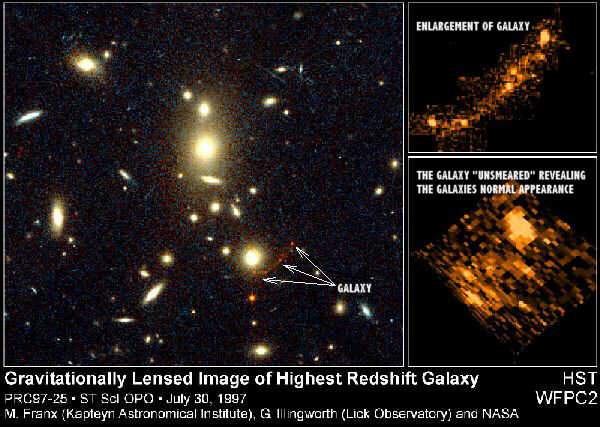
An international team of astronomers has discovered the most distant known galaxy in the universe. The young galaxy is 13 billion light years from us which means that we are seeing it as it was 13 billion years ago.

An international team of astronomers has discovered the most distant known galaxy in the universe. The young galaxy is 13 billion light years from us which means that we are seeing it as it was 13 billion years ago.
Since the age of the universe is estimated as 14 billion years, the light from this galaxy left when the universe was only 7% of its current age. Astronomers can therefore examine a galaxy born near the beginning of the universe.
The Hubble picture shows the young galaxy as a faint red crescent (arrowed). The galaxies image is brightened, magnified and smeared into an arc shape by the gravitational influence of the intervening galaxy cluster (the yellow circular and elliptical blobs), which acts on the light of the distant galaxy like a gigantic lens. The galaxy cluster is 5 billion light years from Earth.
WHAT IS A GRAVITATIONAL LENS?
Predicted by Einsteins General Theory of Relativity, gravitational lenses are collections of matter (such as clusters of galaxies) that are so massive that they warp space in their vicinity, allowing the light of even more distant objects to curve around from behind the galactic cluster and to be seen from Earth as magnified objects.
HOW DID ASTRONOMERS KNOW IT WAS A LENSED OBJECT?
A telltale sign of lensing is the fact that the remote galaxies image is smeared into an arc shape.
Note: 1 billion is 1,000,000,000 and 1 light year is approx 6,000,000,000,000 miles.
Photo Credit: Hubble Heritage Team(AURA/STScI/NASA)